30+ Tips on Building a Solid eCommerce Return Policy

The first days of your store, first orders, first struggles, and boom – a customer sends you an email asking how they can return their purchase. If this a surprise - you probably haven’t thought through your return policy. It’s the right time to establish one!
Why Does Each and Every Store Needs a Return Policy?

In some countries, online stores are obliged to have a return policy according to the law

The return policy shows that you’re committed to providing great customer service

A clear and transparent return policy is an additional reason to buy from you, because it’s adding confidence to the client

It helps you handle customer’s frustration gracefully (and possibly turning frustration into something more positive)

A return policy reduces time and money you spend on returns, as well as the overall number of returns

A return policy can help you up-sell or cross-sell customers that return their orders, as well as acquire future sales (for example, via store credit refunds, and more). See how Petsmart acquires new customers via returns from other manufacturers:
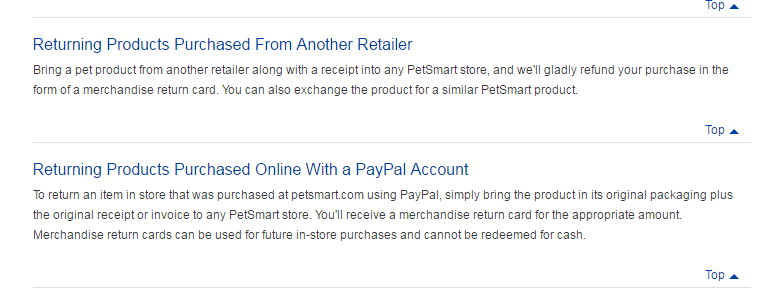
Now you know why you need a return policy. Time to schedule a meeting with your colleagues and figure out its details. While figuring this out, always keep the following principles in mind.
Top Principles of a Solid Return Policy

Transparency. No hidden information or costs are allowed.

Honoring the law. Consult your local lawyer if you’re unsure about the rules here.

Best practices and common sense.

Balance between customer satisfaction and your business losses. We all know customers want free returns, no questions asked, preferably fast. But if you can’t afford these return rules, it’s absolutely okay. Your policy shouldn’t ruin your business.

Protecting both the customer and you. It’s an arrangement regulating relationships from both sides.
When deciding on whether you should guarantee return payments or set return deadlines, you may want to do your calculations to see how it correlates with your budget. While doing that, keep in mind that there are some ways to help the situation. For example, ask your delivery partner if they have a special return program (for example, UPS has one). Also, if you need some software or extensions to manage returns, count their cost in as well.
Now it’s time to write the text of your return policy. Remember that it should be easily accessible on your website. You can add links within the transaction emails and place a return card/sticker or a printed return policy inside the order box. Make sure that this page is also optimized for search engines, as many customers will just google it instead of looking through your website.
Tips for Publishing Your Return Policy

Use plain English and try to avoid complex legal terms. Make sure that your customers will understand what the document is about. To check if the text is easy enough, read it to your granny (not necessary, but this method does work)!

No copy-pasting here. Invest your time in your own unique policy.

Give scenarios on what the customer needs to do if he or she wants to return the product. Step-by-step guides will also reduce questions that go through your support department.


A FAQ serves the same purpose as step-by-step instructions.
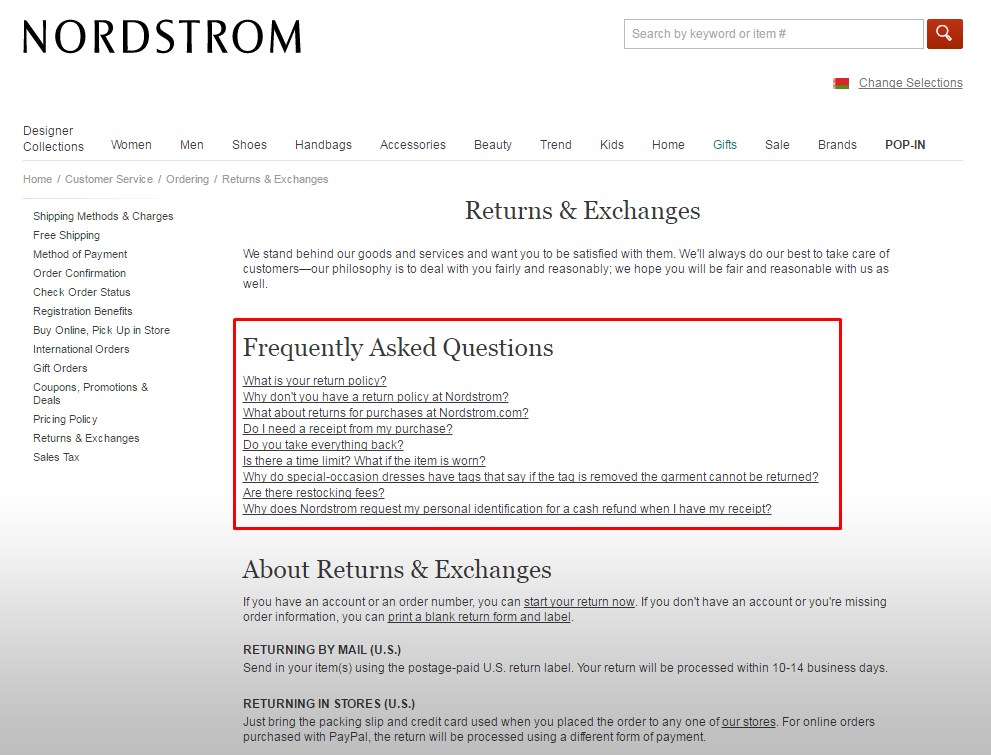

Be friendly and don’t scare your clients off. Your policy shouldn’t be something complicated. It’s not another challenge for the customer, it’s something that helps them.
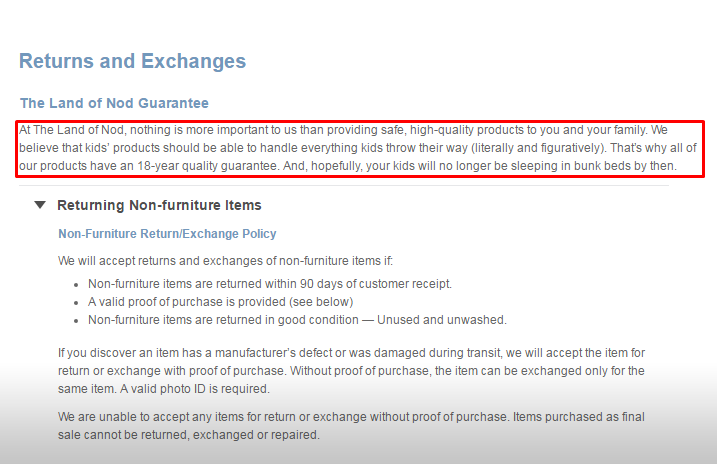

Include warranty information into your return policy.

A bit of fun is always good!
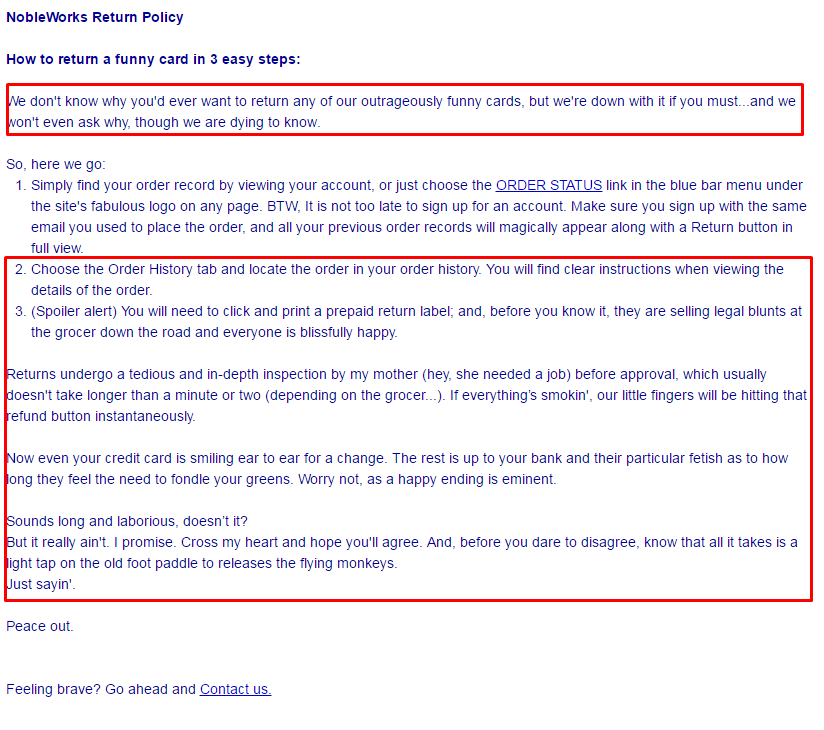

Place the most important information at the top of the document.
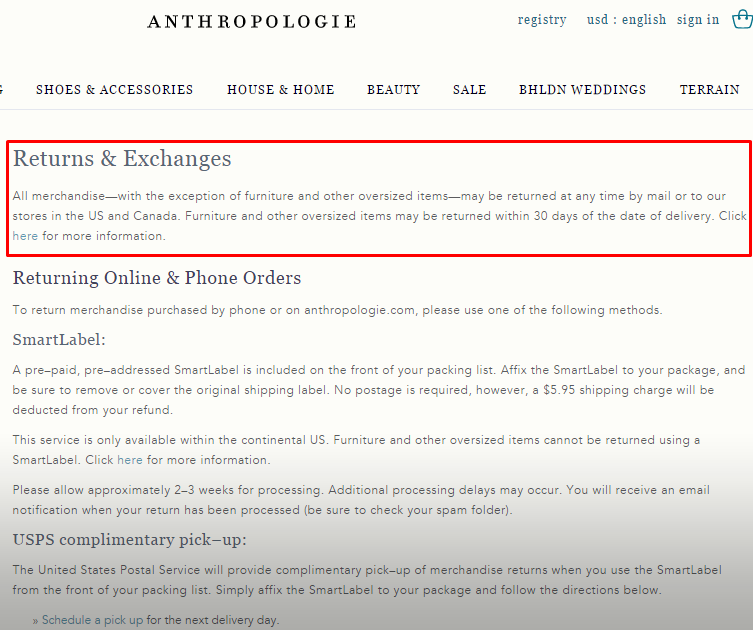
Return Policy Changes
It’s absolutely OK to change your return policy rules if you feel that you need to. While tracking your competitors, powerful market players, trends and your own stats, you may see that you can discharge unpopular solutions and give more freedom for return algorithms that your customers use more frequently.
If you change your return policy, here’s the list of actions you also need to perform:
 Inform your customers about the changes. You can do this via the top section of the page, a website popup, an email campaign, a blog post, a note in the transaction emails, and so on.
Inform your customers about the changes. You can do this via the top section of the page, a website popup, an email campaign, a blog post, a note in the transaction emails, and so on.
 Honor the previous policy version for orders that were placed before the changes.
Honor the previous policy version for orders that were placed before the changes.
 Double check if the new rules are okay with the law.
Double check if the new rules are okay with the law.

Timely notify your staff about the changes.

There will be confusion as some customers still won’t be able to see the changes made. Take your time and patience to explain and solve the issues.

If you do a little bit of downgrading, don’t hide it! And be ready that some customers won’t like it. It's still OK to make these business decisions - you're earning money and not running a charity.
If you’re not sure about options that you want to add to your return policy, try special offers for particular occasions to 'test the waters' (for example, free returns on all orders over $40 during a Christmas sale).
Why Do People Return Products in eCommerce?
Generally, product return rates in eCommerce are higher than in brick-and-mortar stores. The reason is simple: even with great descriptions and product photos, choosing the item online isn’t the same as seeing it in an offline store.
Some retailers experience as much as 50% return rates. US online retailers report a return rate between 20% and 40%, while the highest return rates can be seen in clothes and fashion niches.
As Sophie Glover, head of technical services at ASOS, has commented:
"...some customers treat our free shipping service as part of their changing room experience, except it’s at home in their bedroom."
What Can You Do to Reduce the Number of Returns in Your eCommerce Store?
Around 65% of all returns are a result of mistakes by the retailer. Around 20% of consumers returned items because they received damaged products. You can lower the rate of product returns by implementing additional check-ups before shipping or transferring the goods to the shipping company. Also, find out if the items are damaged because of the shipping company or during postal delivery. You may want to change your shipping partner or reconsider your package solutions.
 22% of customers say that they have received different products from what they initially ordered and 23% said that they got a wrong item altogether. You have to play as a detective and check where mistakes happen and who actually decides to ship a green dress instead of an ordered red one. It’s impossible to avoid mistakes, but a little bit of logic and management can lower the product return rates and save you money.
22% of customers say that they have received different products from what they initially ordered and 23% said that they got a wrong item altogether. You have to play as a detective and check where mistakes happen and who actually decides to ship a green dress instead of an ordered red one. It’s impossible to avoid mistakes, but a little bit of logic and management can lower the product return rates and save you money.
 When a product is returned, always ask the customer why he or she decided to return. Track average time periods between orders and returns, collect other statistics, including price ranges for returned orders, typical products that are often returned. This information will help you eliminate those blind spots or reconsider your store's line of products.
When a product is returned, always ask the customer why he or she decided to return. Track average time periods between orders and returns, collect other statistics, including price ranges for returned orders, typical products that are often returned. This information will help you eliminate those blind spots or reconsider your store's line of products.

Make sure that the product page information is relevant and useful. Clear descriptions, quality pictures, correct size info (not only the size numbers, but size guides from the manufacturer, style info like ‘loose’ or ‘skin-tight’, model sizes) are essential. See how Marks&Spencer masters fashion item descriptions:
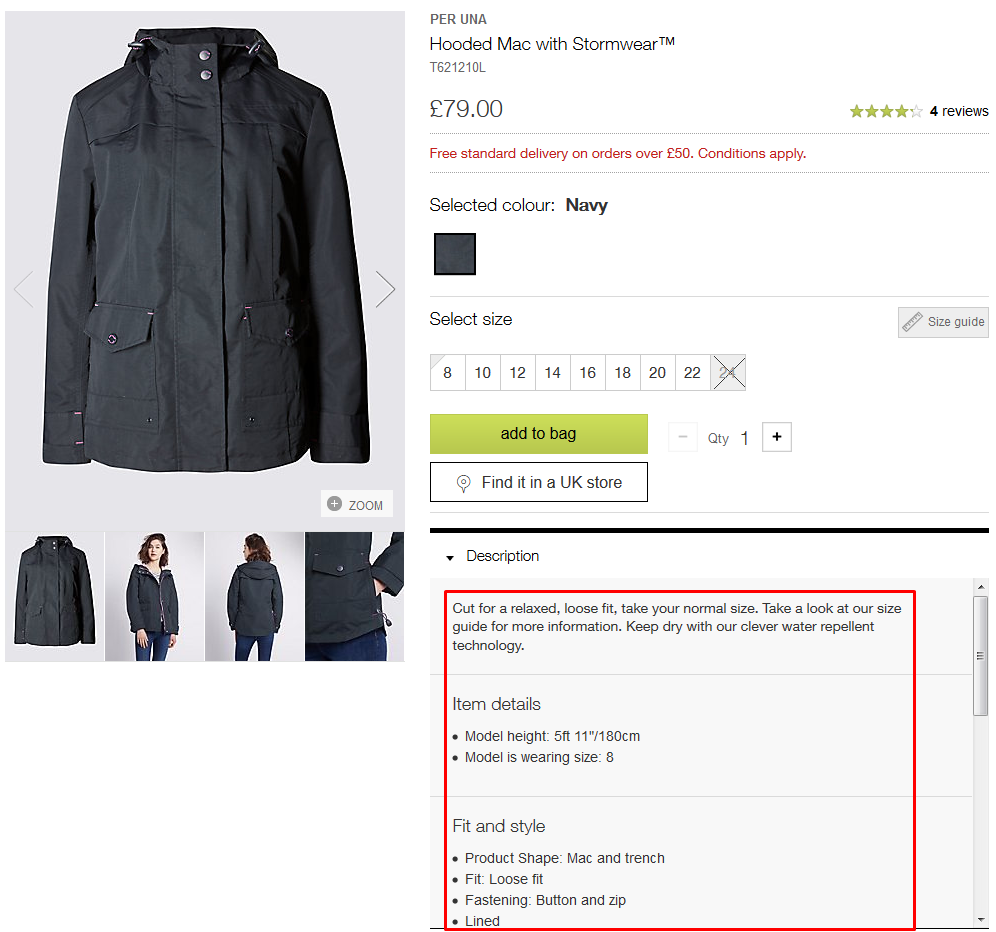

Reviews are a very important part of the scenery. They can show even more info (for example, the size of the customer and whether the item was good for him):
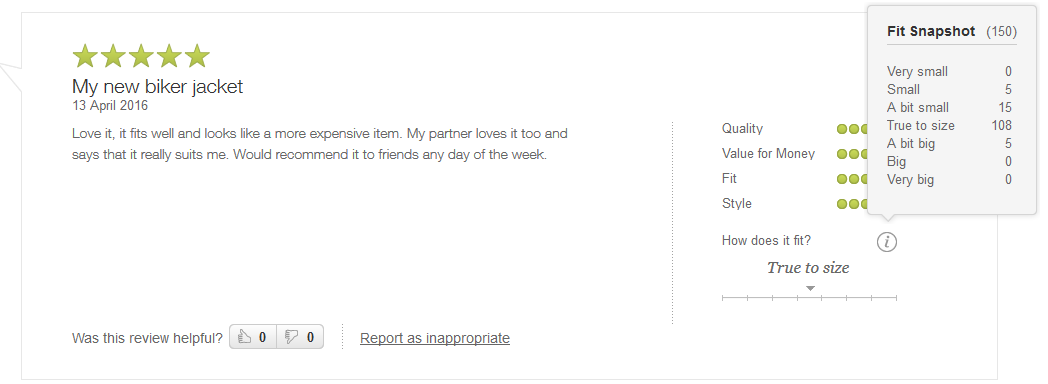
Any sizing tools will help! If you can integrate with tools like TrueFit – great. If not, use any opportunities to give the customers more info about the product. Remind the customer that he or she can consult and ask a question about the item size and other qualities (not necessarily for apparel).
Final Words
I do hope that you are on your way to creating the perfect return policy. Product returns are a significant issue for eCommerce businesses, but they're inevitable. Don’t think that you can work without product returns at all.
If the customer returned the product, make something pleasant in return. Send him a card or a coupon code, always try to extend your relationships even further, even if something went wrong.
According to a survey by comScore and UPS, 63% of American consumers check the return policy before making a purchase and 48% would shop more with online retailers that offer hassle-free returns.
As you can’t avoid product returns, use them as a wonderful opportunity to show you’re damn serious about business and customer service.
About the Author

Ksenia Dobreva is a devoted marketer with special love for blogging. She believes that content with a pinch of SEO and social marketing can be a brilliant tool for your business growth.
When she’s not working on Amasty updates and blog posts, Ksenia runs a blog on movies and books, participates in the online feminist community and helps animal shelters.
